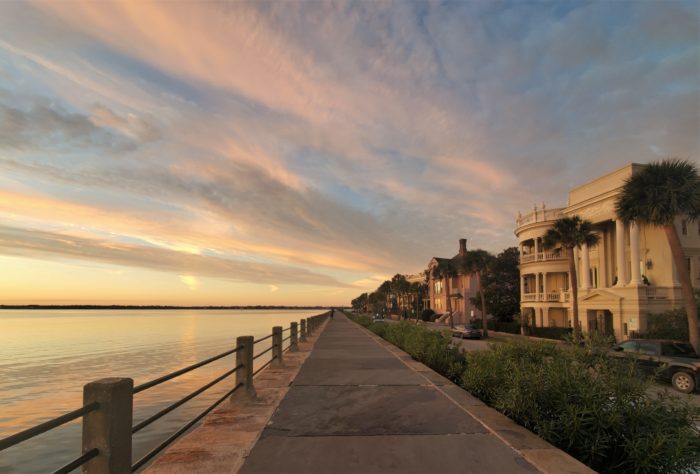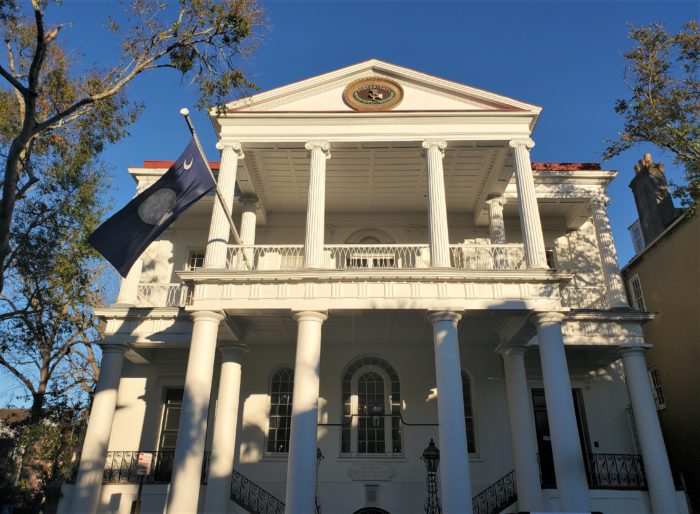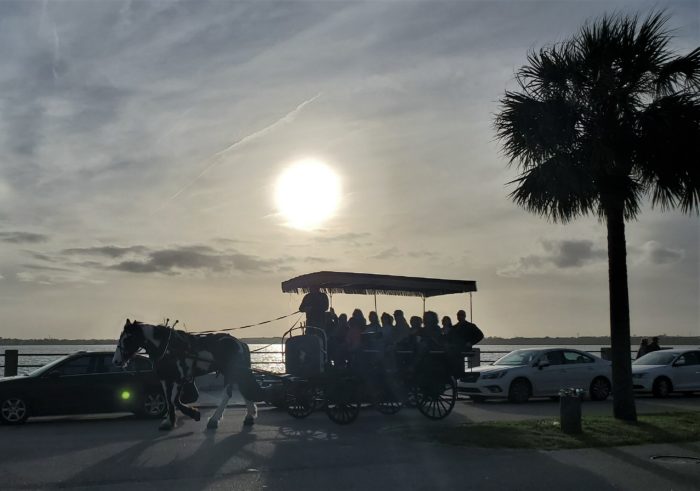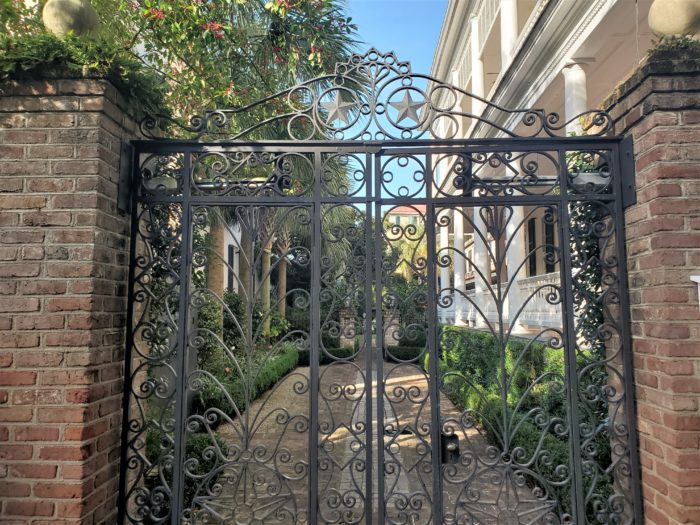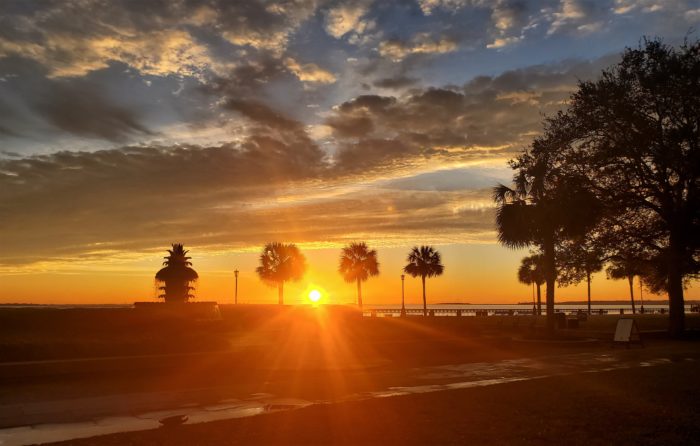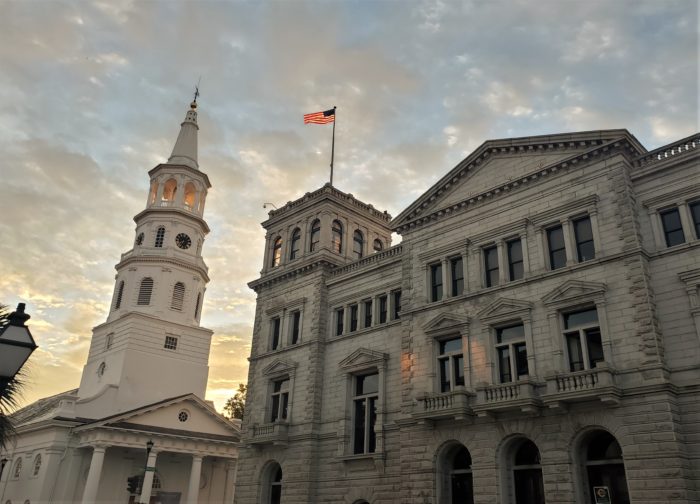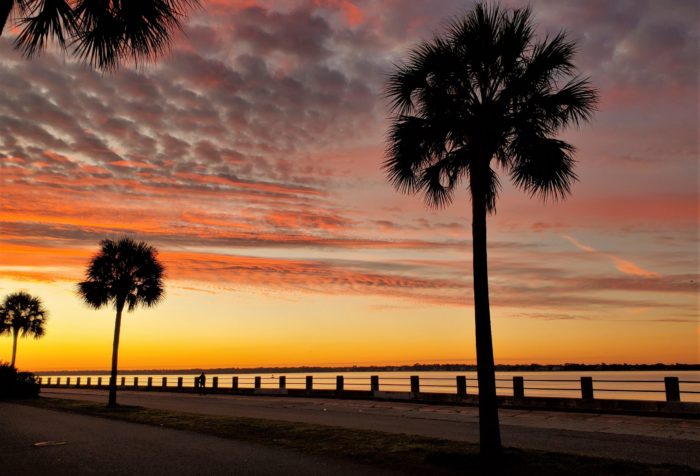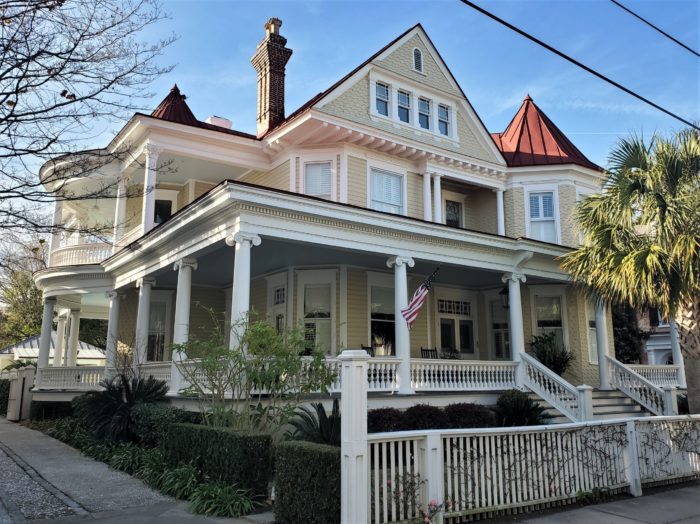The High Battery just before dawn. From here you have a wonderful view of the harbor, including Shute’s Folly — an island on which stands Castle Pinckney, a small fortification built in 1810 on the ruins of a Revolutionary War fort.
High Society
South Carolina Society Hall was originally created to be a meeting place and a school for indigent children. Built on Meeting Street in 1803-04, it has had several modifications and renovations over the years — a significant one took place after the Civil War, in which the building sustained damage during the bombardment of Charleston. It is said that there are still cannonballs lodged in the trusses in the attic.
Brrrr
January is the coldest month of the year in Charleston. Can you feel it in this photo along Murray Boulevard?
Tradd Street Gate and Garden
This beautiful gate guards a house on Tradd Street that was built by William C. Bee in 1850. Bee is best known as owning the leading blockade running company during the Civil War.
Sunrise
A beautiful sunrise seen across Joe Riley Waterfront Park. Serving over 40 years, Joseph P. Riley Jr. was the longest serving Charleston mayor and the 22nd longest in US history.
First Rays
The day’s first rays of sun lighting up the innards of the bell tower of St. Michael’s and the flag on the Federal building. Inside the Federal building is the wonderful Postal Museum — a one room museum chronicling the history of the postal service in Charleston.
The Villa
The Villa Margharita, built in 1895 on South Battery, is eye-catching at any time, but really looks great at night. Located across from White Point Garden, if it had been constructed 177 years earlier it would have had a front row seat for the hanging of Stede Bonnet, the Gentleman Pirate.
Murray
Just before dawn along Murray Boulevard, which is named after a Charleston native who was largely responsible for funding the reclamation and beautification efforts of the area which began in 1909.
Your Majesty
This Queen Anne style house on Legare Street was built in 1876-77, replacing an earlier one that burned in the fire of 1861.
Showoff
The Josiah Smith House on Meeting Street has a number of significant architectural elements, including this beautiful demi-lune portico. Built just after the Revolutionary War in 1783, the details on the house were a way for the merchant Smith to show off his wealth.
- « Previous Page
- 1
- …
- 47
- 48
- 49
- 50
- 51
- …
- 188
- Next Page »
